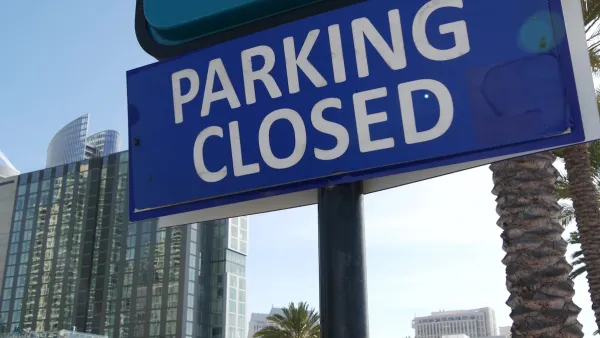The Brookings Institution's "State of Metropolitan America" database (at http://www.brookings.edu/metro/StateOfMetroAmerica/Map.aspx#/?subject=7&ind=70&dist=0&data=Number&year=2009&geo=metro&zoom=0&x=0&y=0 ) contains a wealth of information both on central cities and their metropolitan areas. One issue I was curious about was the economic gap (or lack thereof) between cities and their suburbs.
The Brookings Institution's "State of Metropolitan America" database (at http://www.brookings.edu/metro/StateOfMetroAmerica/Map.aspx#/?subject=7&ind=70&dist=0&data=Number&year=2009&geo=metro&zoom=0&x=0&y=0 ) contains a wealth of information both on central cities and their metropolitan areas. One issue I was curious about was the economic gap (or lack thereof) between cities and their suburbs. In the late 20th century, many central cities (especially in the Northeast and Midwest) fell behind their suburbs economically, becoming the warehouses for the region's poor. Did this continue to be the case in the 2000s?
To answer this question, I looked for information on city household income as a percentage of regional household income. (I note that because cities tend to have smaller households than their suburbs, this measurement tends to make cities look poorer than would a focus on per capita income).* In particular, I was interested in northern cities that had lost population for large chunks of the 20th century, as opposed to constantly-growing cities such as Columbus, Indianapolis, and many Sun Belt cities.
Generally, older central cities fell into two categories. One category was cities, mostly larger cities, that had rebounded from their 20th century difficulties. In these cities, the city/suburb income gap narrowed during the 2000s. For example, in the District of Columbia, urban household income increased from 75% of regional household income in 2000 to 82% in 2009. This pattern was common in the largest northern regions, such as Boston (74% in 2000, 83% in 2009), New York (from 76% to 78%) and even some population-losing cities such as Chicago (77% to 81%) and Pittsburgh (77% to 80%).
A second category is a group that former Albuquerque Mayor David Rusk labelled as cities that have passed at "The Point of No Return"- cities that had, as of 2000,** never closed the economic gap with their suburbs. Rusk labelled ten core cities of major (population of over 1 million) metropolitan areas in this way: Cleveland, Detroit, Birmingham, Buffalo, Baltimore, Hartford, St. Louis, Rochester and Providence. How did these cities do?
The picture here is more mixed. Some dying cities continued to die: Cleveland's median household income nosedived from 61% of the regional average in 2000 to 54% in 2009, Detroit's from 63% to 58%, Hartford's from 46% to 42%. Some other cities sustained smaller losses: Birmingham from 70% to 68%, Baltimore from 60.2% to 59.5%, Philadelphia from 64% to 61%, and Rochester from 61.6% to 60.5%. But two cities that were supposedly past the point of no return sustained income rebounds: St. Louis from 62% of the regional average to 67%, Providence from 63% to 68%. (Buffalo also gained ground by an insignificant margin, from 63.6% to 64%).
A middle group of cities that suffered losses during the late 20th century but were not quite at the "Point of No Return" generally continued to become poorer than their suburbs, though rarely at a rapid rate. Milwaukee's median household income declined from 71% of the regional average in 2000 to 67% in 2009; similar results occurred in Cincinnati (66% to 64%), and Minneapolis (70% to 69%).
So what do we get out of this data? I would say that as a general matter, well-off cities tended to become more well-off: the rebounding cities all had median household incomes at or above 3/4 of the regional household income. These cities were sufficiently appealing to attract more affluent people. By contrast, cities that had "passed the point of no return" mostly continued to lose wealth.
The correlation between population growth and income growth was not 100 percent: some growing cities (like Philadelphia) became poorer relative to their suburbs, and some population losers (like Pittsburgh) did not. Nevertheless, there seems to be at least a modest correlation between population and income: of the eight "Point of No Return" cities that continued to lose income, only two (Philadelphia and Hartford) gained people during the 2000s.
*William Lucy's new book, Foreclosing the Dream, contains a wealth of data using per capita income.
**See David Rusk, Cities Without Suburbs: A Census 2000 Update, at 78-82 (2003 ed.)

Analysis: Cybertruck Fatality Rate Far Exceeds That of Ford Pinto
The Tesla Cybertruck was recalled seven times last year.

National Parks Layoffs Will Cause Communities to Lose Billions
Thousands of essential park workers were laid off this week, just before the busy spring break season.

Retro-silient?: America’s First “Eco-burb,” The Woodlands Turns 50
A master-planned community north of Houston offers lessons on green infrastructure and resilient design, but falls short of its founder’s lofty affordability and walkability goals.

Test News Post 1
This is a summary

Analysis: Cybertruck Fatality Rate Far Exceeds That of Ford Pinto
The Tesla Cybertruck was recalled seven times last year.

Test News Headline 46
Test for the image on the front page.
Urban Design for Planners 1: Software Tools
This six-course series explores essential urban design concepts using open source software and equips planners with the tools they need to participate fully in the urban design process.
Planning for Universal Design
Learn the tools for implementing Universal Design in planning regulations.
EMC Planning Group, Inc.
Planetizen
Planetizen
Mpact (formerly Rail~Volution)
Great Falls Development Authority, Inc.
HUDs Office of Policy Development and Research
NYU Wagner Graduate School of Public Service





























